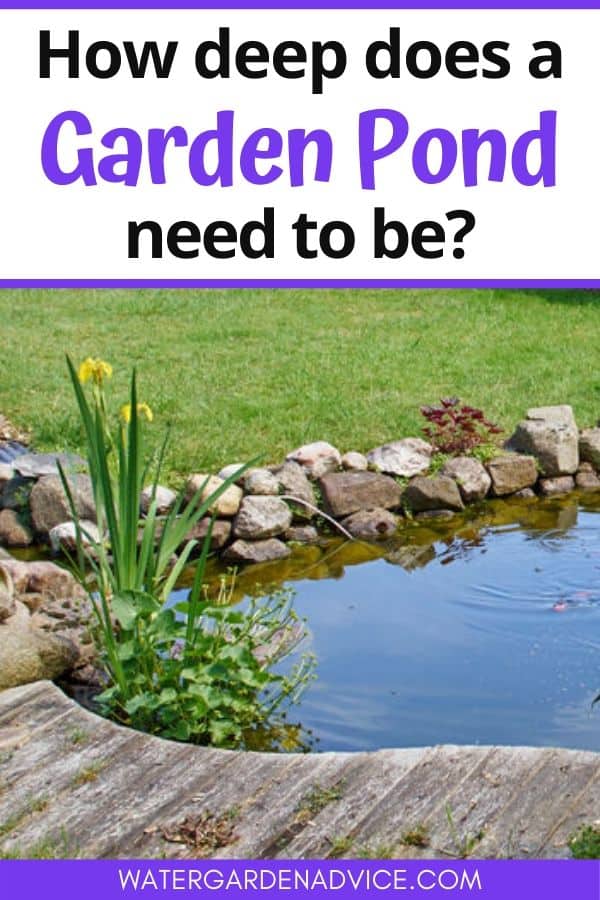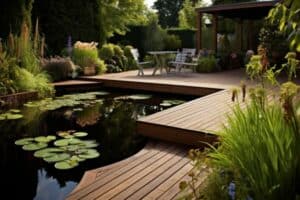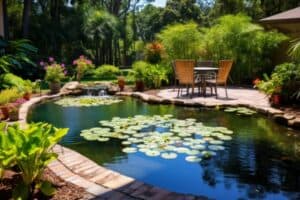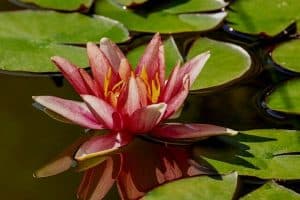Whether you’re planning to build a fish pond, lily pond or wildlife pond, getting the pond depth right is essential.
In this article I’ve listed the depth requirements for each different type of pond so you’ll know exactly how deep to make your new pond.
This post about backyard pond depth contains affiliate links. Please read the disclosure for more info.
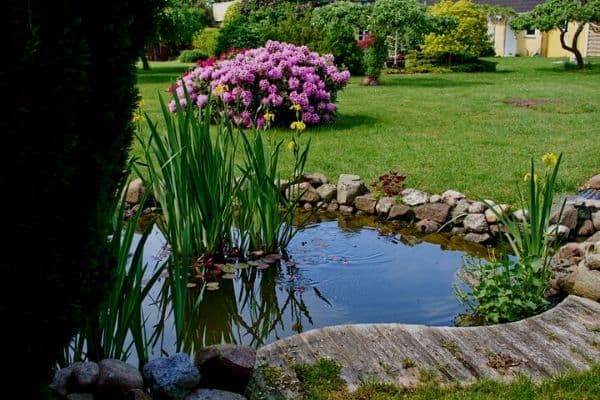
Before you start building a pond you’ll need to decide if you’re going to have fish in the pond or would you prefer a water garden with lilies, lotuses and other pond plants?
Lily Pond Depth
If you’d like to create a beautiful lily pond in your backyard, you’ll need to make it at least 12 to 18 inches (30 to 45 cm) deep, but lily ponds in cool climates will need a deeper section of pond that is at least 2 feet (60 cm) deep.
Before winter, cut back any yellow leaves and submerge the pot in the deepest part of the pond where the water will stay warmer during the winter months.
RELATED: How To Create A Lily Pond
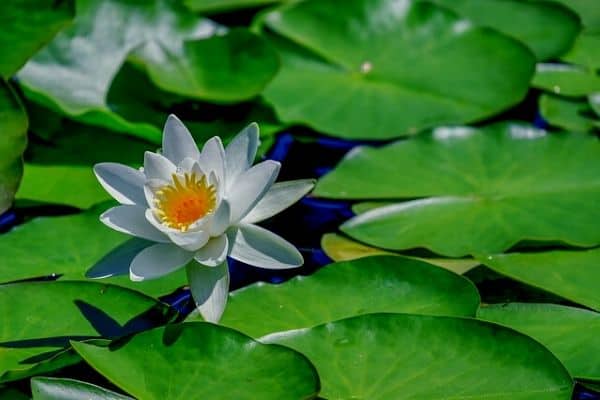
Fish Pond Depth
Small, shallow ponds warm up quickly during the summer months, which can lead to algae overgrowth and fish kills, so it’s important to have enough depth and water volume for the fish to live comfortably.
Before you buy your fish, make sure that your pond will be large enough to accommodate the type of fish you intend to purchase.
Small fish like goldfish and mosquito fish are perfect for a little backyard pond, but large fish like koi need plenty of space to swim around freely, especially when they begin breeding.
Fish ponds also need to be deep enough for the fish to survive over the cold winter months.
Goldfish ponds need to be at least 2 feet (60 cm) deep, while koi ponds should be at least 2 to 3 feet (60 to 90 cm) deep.
RELATED: How To Add Fish To A Backyard Pond
In cold climates, koi and goldfish go dormant during the winter months and stay at the bottom of the pond where it’s warmer, so you need to make sure that there is enough depth for them to avoid freezing. [1]
If you live in a very cold climate where the surface of the water is likely to freeze over winter, it’s best to make your pond at least 3 feet (90 cm) deep.
You can install a pond de-icer to prevent the surface of the pond freezing.
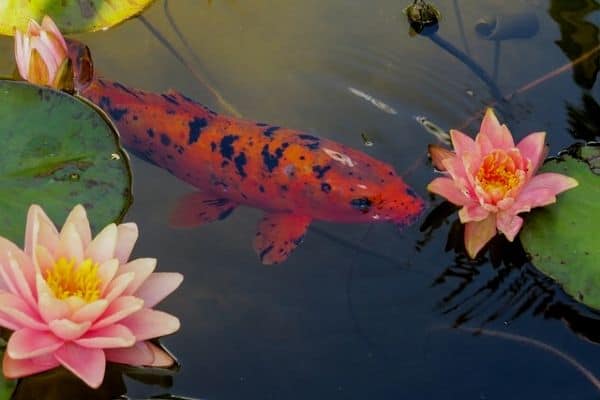
Wildlife Pond Depth
Wildlife ponds only need to be 6 to 12 inches (15 to 30 cm) deep, just deep enough for visiting wildlife to bathe and drink.
If you’re planning to build a wildlife pond, it’s ideal to have a gently sloping entrance that frogs can use to access the pond and a shallow area where birds can have a drink and clean their feathers.
You’ll also need a few rocks in a shallow area of the pond for butterflies, dragonflies and damselflies to land on and some large rocks for frogs and lizards to sun themselves on.
It’s also a good idea to plant some tall plants like ornamental grasses and shrubs around the edge of the pond to give frogs and lizards a place to hide and shelter from the sun.
RELATED: 5 Wildlife Attracting Water Features
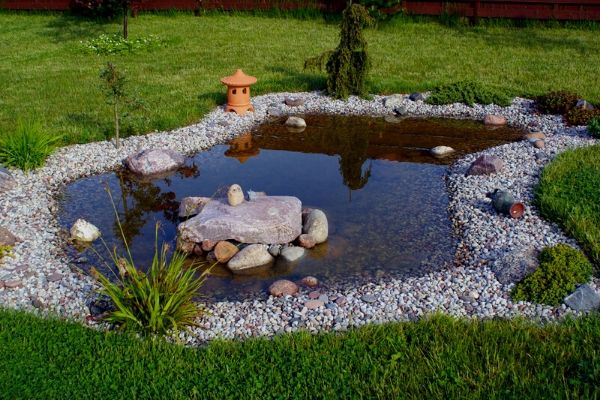
So there are my tips for getting the pond depth right when building a new pond.
RELATED ARTICLES
Do you have any questions about pond depth for backyard ponds? Let me know in the comments below.
Are you on Pinterest? I have boards dedicated to Backyard Ponds and Koi Ponds that you may find interesting.
Don’t forget to pin this post so you can come back to it when you’re ready to build your pond.
